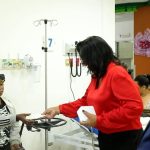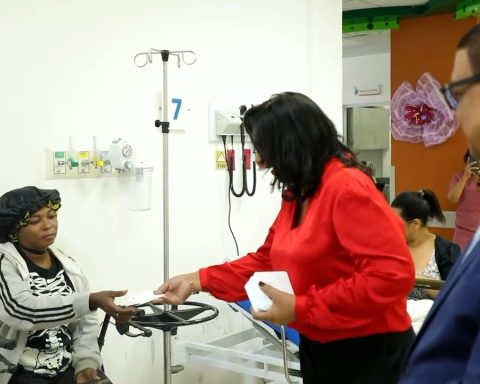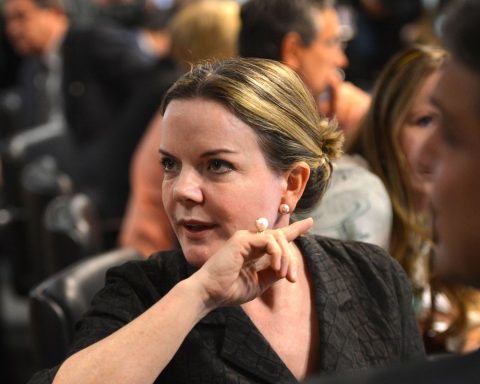The Uruguayan economy grew again last year and registered an expansion of 4.9% average in 2022, according to data released this Thursday by the Central Bank of Uruguay (BCU).
The Gross Domestic Product (GDP) cfell 1.3% in the fourth quarter compared to the third quarter of the year –adjusting for seasonal effects–. With a decrease – reviewed by BCU – of 0.7% in the third quarter, the economy entered a technical recession in the second half of 2022.
Meanwhile, activity contracted 0.1% compared to the last quarter of 2021.
He andcooling with a progressive slowdown in activitywas accentuated over the closing of last year with the impact of the drought that affected sectors such as agriculture.
The analysts’ view
The Economist, Xavier deHaedo, He pointed out that of the 4.9% annual growth, 4% was a statistical drag from 2021. “Throughout the year 2022 the economy did not grow. Two consecutive quarters with clear falls. Recession. GDP data confirm that 2022 ended very badly, as several indicators anticipated”, wrote.
Meanwhile, CPA Ferrere economist, Nicholas Cichevskiwrote on his Twitter account that at the end of 2022, Uruguay’s GDP was 2.5% above the 2019 average.
He added that although most economies stagnated during the second semester (Argentina and Paraguay fell in the fourth quarter), “Uruguay’s performance was relatively worse.”
Cichevski and De Haedo agreed that the drag effect for 2023 is -1%. According to De Haedo, that “makes it difficult” to grow 2% between annual averages this year. “It seems that we ‘pessimists’ were actually optimists,” he said.
On the other hand, a report from the Center for Development Studies (CED) explained that in the second semester the economy experienced a contraction, “closing a year from more to less”.
In this sense, he added that the beginning of 2023 is showing “negative signs” in exports, the industrial core, collection, as well as from the consequences of the drought in electricity generation and agricultural production.
“All in all, a first half of the year with little dynamism and a recovery towards the second half of the year are to be expected,” affirmed the document.
the latest projections presented by the Executive Power indicate that the activity will grow again this year, but at a rate of 2%. The figure is one percentage point below that stipulated in the last Accountability. This number is subject to the uncertainty generated by the impact of the drought on the agricultural sector.
Meanwhile, the private analysts they projected an expansion of 2.45%, according to the median response to the BCU expectations survey published in February. It is probable that these projections could be adjusted downward.
Consumption grew and exports fell
During the fourth quarter the private consumption grew 4.5% Meanwhile, the exports of goods and services fell 5.6% in year-on-year terms, while imports increased 3.7%.
Negative Effects of Drought
In 2022 there was growth in most activities, with the exception of the agricultural sector, whose figures began to reflect the negative effects of the drought.
In particular, during the last quarter of 2022 the added value of the sector agriculture, fishing and mining presented a contraction of 21.5% in the year-on-year comparison.
The main negative incidence corresponded to agriculture, due to lower expected yields in soybeans for the 2022/2023 harvest compared to the previous harvest. In the case of livestock activity, there was a lower extraction of cattle, both for slaughter and for exports, according to the BCU.
The manufacturing industry fell 4.3%. This performance is mainly explained by the reduction in the production of the refrigeration industry, associated with lower external demand.
The production of electricity, gas and water decreased 5.7%due to lower electric power exports to Argentina and Brazil.
Ines Guimaraens
For her part, the construction increased 1.5% year-on-year, explained by the growth in buildings, despite fewer works associated with the third pulp mill. In the other constructions, the greater activity was explained by road works, communication lines and power lines, which was offset by less port infrastructure works and the Central Railroad.
the activity of trade, accommodation and catering and beverages had a year-on-year increase of 5.6%. The good performance of the sale of clothing, televisions and vehicles stands out. Meanwhile, the activity of restaurants and hotels grew again driven by the reopening of borders and the greater demand from non-resident tourists.
The sector of transport, storage, information and communications grew 6.8%; the financial services 2.7%; professional activities and leasing 3.8%; and health, education and real estate activities 1.1%, all compared to the fourth quarter of last year.
Review of annual figures 2021
The BCU revised upwards the GDP estimates for 2021 compared to 2020, from 4.4% to 5.3%
















